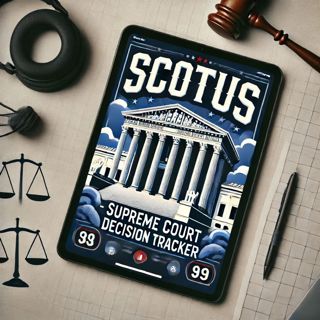
Navigating the Intersection of Mayoral Governance and Federal Legislation: Insights from Legal Battles
The dynamics of mayoral governance and federal legislation often intersect at the juncture of local challenges and national laws, a concept illustrated by recent legal battles involving high-profile city leaders and significant judicial decisions. One particularly notable scenario involves New York City Mayor Eric Adams, whose legal strategy may be influenced by a precedent set by an Indiana mayor's successful Supreme Court challenge against the Justice Department.This previous case saw the Indiana mayor contesting what was seen as federal overreach, a move that not only underscored the complexities of federal versus local jurisdiction but also highlighted the role of the Supreme Court in resolving such disputes. The decision in favor of the mayor not only reinforced the autonomy of local government in certain regulatory areas but also demonstrated the potential for other city leaders to leverage similar legal frameworks in their own governance and legal challenges.Mayor Adams is currently facing his own legal hurdles where such a precedent could prove beneficial. While the specifics of Adams’ case differ, the essence of contesting federal reach into local affairs remains a central theme. The Supreme Court's role in these matters is crucial as its decisions can set national precedents that shape the powers and limitations of city officials across the country.In a broader context, recent rulings on other significant issues such as abortion laws show the ongoing impact of the judiciary on local policy. For instance, a recent decision by Fulton County Superior Court Judge Robert C.I. McBurney striking down Georgia’s 6-week abortion ban has drawn widespread attention. Although the decision is localized, its implications are vast and likely to prompt appeals, potentially escalating the matter to higher courts, including the Supreme Court.These cases underscore the judiciary’s pivotal role in not only interpreting the law but also in shaping policy, balancing federal and local powers, and influencing public administration. The outcomes of such legal battles are closely watched as they hold significant implications for governance, individual rights, and the interplay between different levels of government. As these legal proceedings unfold, they continue to provoke dialogue on the nature of authority and governance in the United States.This content was created in partnership and with the help of Artificial Intelligence AI
1 Okt 20242min

"Judiciary Showdown in North Carolina: Democratic vs. Republican Candidates Vie for Superior Court Seat"
In 2024, the race for the Superior Court judge's seat in District 6C, North Carolina, will see candidates Ricardo Jensen and Max Ashworth vying for the position. Their perspectives differ notably, each reflecting their respective political alignments, with Jensen running as a Democrat and Ashworth as a Republican. Their views on the judiciary's role in state governance will likely shape their campaigns and influence the decision-making process in this key judicial election.In a separate legal development involving corporate accountability, the Court of Appeal has upheld a High Court decision in Cridge v Studorp Limited. This case centered around James Hardie New Zealand Limited, known for its building products. The legal contention arose from allegations that the company's cladding product, Harditex, had defects. The decision marks a significant precedent in corporate liability, especially concerning manufacturing and product quality assurance, shedding light on the responsibilities of corporations towards consumers and the enforceability of quality standards in the building industry.Meanwhile, in Georgia, recent changes to election certification rules are being challenged in court. The State Election Board's new rules have sparked controversy, reflecting a broader national conversation around election integrity and the administration of vote tallies. This legal challenge could clarify or possibly reshape how votes are certified in Georgia, potentially setting a precedent for other states with similar legislative landscapes regarding election administration.These developments across different states and legal areas underscore ongoing debates and legal challenges that continue to shape the landscape of American law and governance. Each case combines elements of political influence, public accountability, and legal scrutiny, demonstrating the complex interplay between governance, judiciary interpretations, and public policy outcomes.This content was created in partnership and with the help of Artificial Intelligence AI
30 Sep 20242min

Landmark Rulings: State Supreme Courts Shape Abortion and Land Use Policies
The Arkansas Supreme Court and Hawaii Supreme Court have recently made significant legal decisions affecting state policies on abortion and land use, respectively.In Arkansas, a close 4-3 decision reached by the state's Supreme Court on August 22 sided with Arkansas Secretary of State John Thurston in his decision to reject signed petitions that aimed to secure a ballot amendment concerning abortion rights. This ruling has removed the possibility of a public vote on this particular amendment, thus maintaining stricter abortion regulations in the state.In Hawaii, another pivotal ruling emerged when the state's Supreme Court addressed the contentious issue of vacation rentals operating on agricultural land. This decision reinforces regulations that curb the misuse of farmland for non-agricultural purposes, specifically targeting landowners who have been commercially exploiting these areas as vacation rental properties without adherence to appropriate zoning laws. This ruling was seen as a critical step towards preserving agricultural land for its intended use.Both decisions underscore the continuing influence and impact of state supreme courts in shaping policy on critical and contentious issues like abortion rights and land use. In Arkansas, the decision reflects ongoing national debates following the U.S. Supreme Court's overturning of federal abortion protections in the Dobbs decision, which has led states to reassess their individual abortion laws. In Hawaii, the ruling comes amidst broader concerns about the misuse of prime agricultural land, highlighting the balance between development and conservation.These decisions not only affect the immediate legal landscape in Arkansas and Hawaii but also illustrate the broader national struggles over how state courts interpret laws and constitutional rights. As states navigate these complex issues, the outcomes of such court decisions will likely continue to have wide-reaching implications.This content was created in partnership and with the help of Artificial Intelligence AI
29 Sep 20242min

Supreme Court Rulings Reshape Gender Spaces, Urban Development, and Community Rights Across States
In a series of recent judgments, the Supreme Court has issued rulings that have significant implications across various states and sectors—from gender-specific spaces in museums to local neighborhood zoning and statewide amendments.In Tasmania, the Supreme Court overturned a tribunal's decision that had ordered the Mona Ladies Lounge, a women's-only area within a museum, to open its doors to men. The tribunal initially ruled against the gender-exclusive policy, citing discrimination concerns. However, the Supreme Court's overturn reestablishes the museum's autonomy in maintaining special spaces designated for women, acknowledging the importance of such spaces in certain contexts.Meanwhile, in the United States, the Supreme Court's ruling on Utah's Amendment D, while focused on a specific urban development issue, has broader implications for similar legal questions across the state. While Amendment D was directly addressed, the court noted that its decision would provide guidance on related matters, such as Amendment A. This hints at the court's approach to future cases involving urban planning and development amendments, bridging the interpretation and potential applications of municipal law.Adding to the urban development theme, the Supreme Court is at the center of a significant case involving the City of Boise, Idaho, where local residents from the Veterans Park Neighborhood Association have raised concerns over a shelter relocation plan approved by the city. The relocation, positioned right behind a residential area, has sparked a legal challenge due to potential impacts on property values and community safety. The neighborhood association's appeal to the state's highest court highlights the ongoing tensions between urban development and community rights, a common theme in city planning discussions across the country.These high-profile rulings and ongoing cases demonstrate the crucial role of the Supreme Court in interpreting legislation and guiding the application of laws at both state and federal levels. Each decision not merely resolves individual legal disputes but also sets precedents that will influence legal thought and public policy in the broader socio-political landscape.This content was created in partnership and with the help of Artificial Intelligence AI
27 Sep 20242min

Supreme Court Rulings Reshape American Landscape: Key Cases Involving Trump and North Carolina Environmental Concerns
The Supreme Court of the United States often finds itself at the center of significant and contentious legal battles, shaping significant aspects of American life with its decisions. Two notable cases in recent times involve former President Donald Trump and environmental concerns in North Carolina.Donald Trump's legal team argues that his communications with then-Vice President Mike Pence regarding the 2020 election should be excluded from his impending trial in Washington, D.C. This legal maneuver reflects Trump's broader strategy to limit the scope of evidence regarding his actions and communications around the tumultuous period following the 2020 election results. The lawyers' efforts to keep Pence's communications out of the courtroom underscore the pivotal role that these discussions could play in the ongoing legal evaluations of Trump’s attempts to challenge the election outcome.Meanwhile, in North Carolina, the state Supreme Court is deliberating a significant environmental case, Gardner v. Richmond County, that could determine the future of a proposed CSX industrial plant. The case raises crucial questions about sustainable development and environmental protection, particularly the potential impacts on the water source near Richmond County. At stake is how industrial growth should be balanced with environmental and community health, particularly in areas where resources like clean water are essential.The outcomes of these two cases could have profound implications. In Trump's case, the heart of the legal battle revolves around issues of presidential conduct and electoral integrity. The decision about whether Pence’s communications will be admissible could significantly influence the narrative and outcome of the trial. In North Carolina, the decision by the Supreme Court could either pave the way for the CSX plant, promoting economic development, or prioritize environmental protection and community well-being, setting a precedent for future industrial projects near sensitive ecosystems.These cases exemplify the types of disputes the Supreme Court is called to adjudicate, reflecting their wide-reaching implications not just legally, but also socially and environmentally. The decisions will likely resonate beyond the courtroom, influencing future legal standards and governmental policies.This content was created in partnership and with the help of Artificial Intelligence AI
26 Sep 20242min

Supreme Court Rulings Reshape Legal Landscape Across States
In a series of consequential rulings, the Supreme Court has significantly shaped legal outcomes in various states. One such decision involved the Missouri Supreme Court, which decided to proceed with the execution of Marcellus Williams. Despite arguments from Williams’ legal team asserting his innocence, the Court upheld the judgment, suggesting that the evidence or argumentation provided was insufficient to overturn the initial conviction.Another notable development occurred in Wyoming, where the state Supreme Court opened the door for individuals to sue law enforcement officers. This controversial decision has stirred debate among legislators and law enforcement agencies, with some seeing it as a move into "extremely dangerous territory" for policing practices. The broader implications of this verdict have prompted discussions about potential legislative amendments to curb such lawsuits, reflecting a significant tension between judicial rulings and legislative responses.Meanwhile, the U.S. Supreme Court's 2023 decision on affirmative action has dramatically impacted admissions practices across the country, specifically at institutions like the University of North Carolina (UNC). The Court's ruling, which stemmed from the case Students for Fair Admissions v. President and Fellows of Harvard College, effectively banned the use of race-conscious admissions practices. This landmark decision has forced numerous educational institutions to reevaluate and potentially redesign their admissions criteria to comply with the new legal landscape, emphasizing a shift towards race-neutral processes.These high-profile cases underscore the powerful role of the judicial system in not only interpreting law but also in influencing societal norms and institutional practices across various sectors, including education and law enforcement. Each decision not only reflects the prevailing legal standards but also sets new precedents that can have long-lasting impacts on both policy and community relations.This content was created in partnership and with the help of Artificial Intelligence AI
24 Sep 20242min

Supreme Court Rulings Reshape Environmental, Telecommunications, and Child Protection Policies Worldwide
The Supreme Court of the United States (SCOTUS) has been at the center of several crucial legal battles recently, highlighting its critical role in interpreting and enforcing federal laws across diverse domains. Among such significant cases, notable developments include an intense legal tussle involving the city of San Francisco and the Environmental Protection Agency (EPA) over the provisions of the Clean Water Act, a clear indication of escalating tensions in environmental regulatory practices.In an unrelated yet equally significant case, the Supreme Court delivered a unanimous verdict in a lawsuit related to a telecommunications deal involving the Guam Department of Education (GDOE). The justices overturned a Superior Court judge’s decision, which had previously blocked GDOE from contracting with GTA, the winning bidder. This ruling underscores the Supreme Court's influential role in adjudicating cases that have profound implications for both governmental operations and corporate sectors.Simultaneously, the Supreme Court of India has made headlines for its rulings concerning the protection of children against sexual exploitation. In a landmark judgment, the court ruled that the storage of child pornography is an offense under the Protection of Children from Sexual Offences (POCSO) Act. Additionally, the court has called on the Parliament to amend the term ‘child pornography’ to ‘child sexual exploitative and abusive material’, indicating a shift towards more accurate and impactful legal terminology aimed at better safeguarding children against abuse and exploitation.These cases highlight the dynamic and pivotal role of judicial systems in shaping legal standards and societal norms. From environmental regulations in the United States to child protection laws in India, the decisions made by supreme courts have a lasting impact on both policy and public perception, demonstrating their enduring influence on justice and governance globally.This content was created in partnership and with the help of Artificial Intelligence AI
23 Sep 20242min

"Judicial Influence Worldwide: Supreme Court Rulings Reshape Politics, Economics, and Culture Globally"
The Supreme Court's influence extends globally across various domains, including politics, commerce, and art. Recently, its decisions in various countries have shown the impacts and controversies associated with its rulings.In the U.S., Vice President Kamala Harris visited Georgia to emphasize the tragic consequence of the state's abortion ban, following a report of a woman's death linked directly to the restrictive law. This situation underscores the ongoing national debate about reproductive rights and how Supreme Court decisions can directly affect individual lives and health policies.Meanwhile, in India, the economic sector is feeling the effects of the Supreme Court's decisions as well. The Goa Chamber of Commerce and Industries has called for an urgent review of a Supreme Court judgment regarding mineral taxation. The ruling has significant implications for the local economy, particularly for industries involved in mineral extraction and processing. These sectors argue that the taxation levels mandated by the court could hinder economic growth and sustainability in the region, reflecting the broader dialogue about the balance between regulatory measures and economic development.In the realm of art and culture in Spain, the Supreme Court's decision is awaited with bated breath as it deliberates on the fate of a potentially valuable painting, hesitantly attributed to Velázquez, titled "Portrait of a Cleric." The decision on whether to allow the export of the painting could have significant implications for the art market in Spain. If the court permits its sale abroad, it could lead to an outflow of cultural assets and potentially increase the valuation of Spanish art worldwide. Conversely, retaining the artwork within Spain could bolster the national cultural heritage and reinforce a sense of national pride.These instances highlight how Supreme Court decisions are pivotal in shaping not just legal but also economic, cultural, and societal landscapes. Each ruling not only resolves specific legal questions but also sets precedents that affect broader issues, showcasing the profound and wide-reaching authority of such judicial bodies.This content was created in partnership and with the help of Artificial Intelligence AI
22 Sep 20242min





















